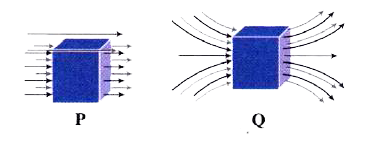Does Euclid’s fifth postulate imply the existence of parallel lines? Explain.
To determine whether Euclid's fifth postulate implies the existence of parallel lines, we can break down the reasoning step by step.
1. Understanding Euclid's Fifth Postulate:
- Euclid's fifth postulate states that if a straight line intersects two other straight lines and the sum of the interior angles on the same side of the intersecting line is less than two right angles (180 degrees), then the two lines will meet on that side if extended indefinitely.
2. Analyzing the Condition:
- If the sum of the interior angles is exactly 180 degrees, the two lines do not meet and are considered parallel. This is a critical condition for the existence of parallel lines.
3. Implication of the Postulate:
- The postulate implies that if the sum of the angles is less than 180 degrees, the lines will intersect. However, if the sum is equal to 180 degrees, the lines will not intersect, indicating that they are parallel.
4. Conclusion:
- Therefore, Euclid's fifth postulate does imply the existence of parallel lines. Specifically, it establishes the condition under which two lines can be parallel (when the sum of the interior angles is exactly 180 degrees).
Summary:
Euclid's fifth postulate provides a criterion for the existence of parallel lines. It states that if two lines are cut by a transversal and the sum of the interior angles on one side is less than 180 degrees, the lines will intersect. Conversely, if the sum is exactly 180 degrees, the lines will not intersect and are parallel.
- Euclid's fifth postulate states that if a straight line intersects two other straight lines and the sum of the interior angles on the same side of the intersecting line is less than two right angles (180 degrees), then the two lines will meet on that side if extended indefinitely.
- If the sum of the interior angles is exactly 180 degrees, the two lines do not meet and are considered parallel. This is a critical condition for the existence of parallel lines.
- The postulate implies that if the sum of the angles is less than 180 degrees, the lines will intersect. However, if the sum is equal to 180 degrees, the lines will not intersect, indicating that they are parallel.
- Therefore, Euclid's fifth postulate does imply the existence of parallel lines. Specifically, it establishes the condition under which two lines can be parallel (when the sum of the interior angles is exactly 180 degrees).
Euclid's fifth postulate provides a criterion for the existence of parallel lines. It states that if two lines are cut by a transversal and the sum of the interior angles on one side is less than 180 degrees, the lines will intersect. Conversely, if the sum is exactly 180 degrees, the lines will not intersect and are parallel.
Topper's Solved these Questions
- BOOK - NCERTCHAPTER - INTRODUCTION TO EUCLIDS GEOMETRYEXERCISE - Solved Examples3videos
INTRODUCTION TO EUCLIDS GEOMETRY
- BOOK - NCERTCHAPTER - INTRODUCTION TO EUCLIDS GEOMETRYEXERCISE - Solved Examples3videos
INTRODUCTION TO EUCLIDS GEOMETRY
- BOOK - NCERTCHAPTER - HERONS FORMULAEXERCISE - Solved Examples6videos
HERONS FORMULA
- BOOK - NCERTCHAPTER - LINEAR EQUATIONS IN TWO VARIABLESEXERCISE - EXERCISE 4.42videos
LINEAR EQUATIONS IN TWO VARIABLES
Similar Questions
Knowledge Check
- Question 1 - Select One
Statement-1 : The Bohr model of the hydrogen atom does not explain the fine structure of spectral lines.
and
Statement-2 : The Bohr model does not take into account the spin of the electronAStatement-1 is True, Statement-2 is True, Statement-2 is a correct explanation for Statement-4BStatement-1 is True, Statement-2 is True, Statement-2 is NOT a correct explanation for Statement-4CStatement-1 is True, Statement-2 is False.DStatement-1 is False, Statement-2 is True.
How would you rewrite Euclid’s fifth postulate so that it would be easier to understand?
View SolutionHow does industrial melanism support Darwin’s theory of N atural Selection? Explain.
View SolutionEuclid's Fifth Postualte|Equivalent Versions Of Euclid's Fifth Postulate (1)|Equivalent Versions Of Euclid's Fifth Postulate (2)|NCERT Example |NCERT Exercise
View SolutionWhat are the various postulates of Bohr's model of atom? How could Bohr's model explain the existance of so many lines in the specturm of hydrogen?
View SolutionA uniform magnetic field, parallel to the plane of the paper existed in space initially directed from left to right. When a bar of soft iron is placed in the field parallel to it, the lines of force passing through it will be represented by

 View Solution
View SolutionConsider the following statement: There exists a pair of straight lines that are everywhere equidistant from one another. Is this statement a direct consequence of Euclid's fifth postulate? Explain.
View SolutionConsider two ‘postulates’ given below:(i) Given any two distinct points A and B, there exists a third point C which is in between A and B.(ii) There exist at least three points that are not on the same line. Do these postulates contain any undefined terms? Are these postulates consistent? Do they follow from Euclid’s postulates? Explain.
View Solution

